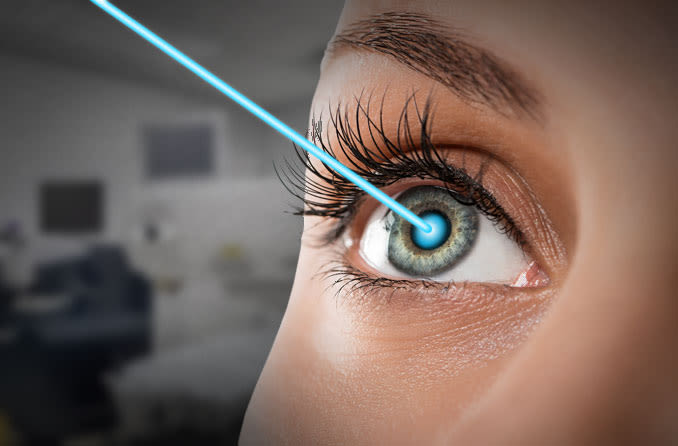It is no secret that the human eyes are one of the most important organs as they function to receive and process visual data to create the world around you. Apart from this, your eyes possess some of the most powerful defensive capabilities, including light control, protection against infections, etc.
Research conducted by the Market Watch revealed that approximately 35 percent of Americans suffer from eye problems that can be fixed. This means that many people in this world suffer due to blurred vision, thus affecting their ability to see things properly. Nonetheless, the good news is that medical advancements have resulted in the introduction of eye treatments, including LASIK surgery.
First, let’s understand what you mean by LASIK surgery, and why do you need it.
What Is LASIK Surgery?
LASIK stands for laser in-situ keratomileusis. This surgery is a popular way of correcting the vision of people who suffer due to eye problems, such as severe nearsightedness or high refractive error.
According to a WebMD study, LASIK surgery has a success rate of at least 96 percent. So, if you’re suffering from a blurred vision or tired of wearing eyeglasses or corrective lenses, you can opt for one depending on your doctor’s recommendation.
Moreover, the good thing about LASIK surgery is that it isn’t a painful process and does not require any stitches or bandages.
When Should You Get LASIK Surgery Done?
If the light fails to focus on your eye retina the way it should, that is when doctors usually recommend you to undertake LASIK surgery. This is because your vision gets all blurred, also known as refractive error. Some of the common types of refractive errors include:
- Nearsightedness: In this situation, you are able to see things clearly when they are close to you, but when they are far away, your vision gets blurred.
- Farsightedness: In this situation, you are unable to see things that are closer to you. However, the ones at a distance are clearer.
- Astigmatism: This condition makes your vision blurred because of the way your eye is shaped.
Therefore, if you have any of the problems mentioned above, you should consult your doctor and determine whether LASIK surgery is suitable.
What Is LASIK Eye Surgery’s Recovery Timeline?
One of the most common worries of patients undergoing LASIK eye surgery is how quick the recovery is going to be. If you’re wondering about the immediate recovery period after the surgery, it lasts from six to twelve hours, depending on your case. This means that most patients can see clearly within 24 hours. However, some might take around two to five days to recover.
Apart from this, in some cases, patients also experience blurred vision for several weeks. As a result, Austin eye physicians recommend that one should take proper care after a LASIK surgery.
Not sure how to ensure a safe and sound recovery? Here are a few tips to help you recover quickly after the LASIK eye surgery:
- After the surgery, your eyes might feel uncomfortable or itchy at some point, but its best to avoid rubbing them. The best way out of protecting them is by wearing glasses.
- After the LASIK surgery, your doctor will call you for regular check-ups to monitor progress. For best results, don’t miss out on your doctor’s appointments and effectively follow his or her guidelines.
- Driving immediately after the surgery is not viable. Therefore one of your family members should be responsible for driving you back to your home.
- Your doctor might prescribe you eye drops which help fasten the healing process, so you should use them regularly.
- You can take a shower after the surgery, but it is best to keep your eyes safe from soap or any other chemicals.
- You should avoid sports and activities, like swimming for a few weeks.
- It is best to shield your eyes for at least for two weeks after the surgery, so whenever you go out, you should wear eye protection.
- Your eyes become quite sensitive after going through a LASIK surgery; thus, you should make sure that there are dim lights in your room.
By following the above-mentioned guidelines, you will notice a significant improvement in your vision. However, full recovery might take around three to six months. According to a study carried out by the American Refractive Surgery Council, complete recovery can take up to six months.
The Bottom Line
The final takeaway is that after undergoing a LASIK surgery, it is very important for you to follow the required precautions. This helps fasten your recovery, improves your vision, and prevents any complications. In case of any concerns regarding your vision or how your eyes feel, you should definitely consult your eye doctor or LASIK eye surgeon for expert advice.






















